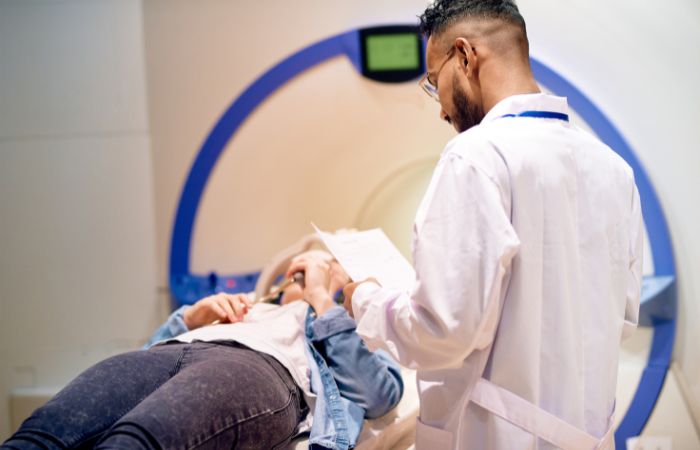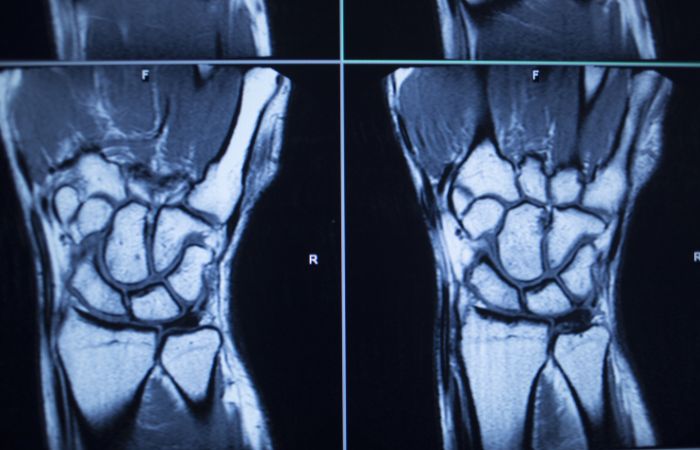
Hand injuries are common, whether they occur due to accidents, sports activities, or repetitive strain. When a hand injury happens, the first step towards effective treatment is an accurate diagnosis. While X-rays and other diagnostic tools can detect certain types of damage, they are limited in their ability to identify soft tissue injuries, such as ligament tears, tendon damage, or nerve compression. This is where a Single-Hand MRI (Magnetic Resonance Imaging) becomes essential.
A Single-Hand MRI provides detailed images of the internal structures of the hand, allowing healthcare providers to see tissues that are not visible in regular X-rays. MRI scans are particularly useful in diagnosing soft tissue injuries and conditions that affect the bones, muscles, tendons, and nerves of the hand.
A Single-Hand MRI is a type of MRI scan that focuses specifically on the hand. Unlike a full-body MRI, which provides images of your entire body, a Single-Hand MRI is localized to the hand and wrist area. This allows for high-resolution imaging of the bones, muscles, tendons, nerves, and ligaments in the hand, providing critical information about any injuries or conditions.
The MRI machine uses a magnetic field and radio waves to create detailed images of the body's internal structures. It’s a non-invasive and highly effective diagnostic tool, and it does not use ionizing radiation like X-rays or CT scans. For this reason, MRI is considered one of the safest imaging techniques available.

Hand injuries are diverse and can affect various parts of the hand, including the bones, muscles, ligaments, tendons, and nerves. A Single-Hand MRI is invaluable in identifying conditions that might not be visible on other imaging tests, such as fractures that affect the soft tissues, tendon or ligament tears, or nerve compression. Here’s how a Single-Hand MRI helps diagnose specific hand injuries:
1. Bone Fractures and Joint Injuries :
While X-rays are generally the first choice for diagnosing bone fractures, they cannot always detect fractures in small bones or subtle fractures that affect only the soft tissue. A Single-Hand MRI provides high-resolution images of the bones and joints of the hand, allowing doctors to detect even small fractures or joint injuries that may not be visible on traditional X-ray films.
MRI can also identify bone bruises or microfractures that might not show up on an X-ray. This can be particularly helpful when treating injuries like fractures of the metacarpals, phalanges, or the wrist, as well as issues involving the joints of the hand.
2. Tendon and Ligament Tears :
Injuries to the tendons and ligaments of the hand are common, especially in athletes or individuals who engage in repetitive activities. Tendons are the structures that connect muscles to bones, and ligaments connect bones to other bones, providing stability to the joints.
A Single-Hand MRI is particularly useful for detecting tears or strains in these soft tissues. Whether it’s a tear in the flexor tendons, which control finger movement, or a ligament injury affecting the wrist or finger joints, MRI provides detailed images of these structures, helping doctors understand the extent of the damage and plan treatment accordingly.
3. Nerve Compression and Damage :
Nerve injuries, including compression of the median nerve (such as in carpal tunnel syndrome), can cause significant pain, numbness, and weakness in the hand. A Single-Hand MRI can detect any abnormalities in the nerves, helping doctors identify the location of the compression and assess the damage to the nerve.
In cases of nerve damage, MRI can provide information on any structural problems that may be affecting the nerve, such as swelling, inflammation, or even herniated discs in the spine that might be contributing to nerve compression.
4. Arthritis and Inflammatory Conditions :
Arthritis is a common cause of hand pain, especially in older adults. Both osteoarthritis and rheumatoid arthritis can lead to swelling, joint stiffness, and deformities. MRI is effective at showing the extent of joint damage caused by arthritis, including cartilage loss, bone erosion, and inflammation of the surrounding soft tissues.
A Single-Hand MRI can help doctors evaluate the severity of arthritis and other inflammatory conditions in the hand. It allows for better monitoring of disease progression and can help inform treatment options such as medication, physical therapy, or surgical interventions.
5. Tendonitis and Tenosynovitis : Tendonitis refers to inflammation of the tendons, while tenosynovitis is inflammation of the lining of the sheath that surrounds the tendon. These conditions can cause pain, swelling, and difficulty moving the hand or wrist. MRI is often used to diagnose these conditions as it provides detailed images of both the tendons and the surrounding tissues, allowing for a precise diagnosis.
6. Soft Tissue Infections : In some cases, infections can affect the soft tissues of the hand, leading to abscesses or cellulitis. A Single-Hand MRI can be instrumental in identifying the location and extent of an infection, especially if it is deep within the tissues. MRI scans can help doctors determine whether an infection has spread to the bones or joints, which may require more aggressive treatment.
7. Tumors and Cysts : While rare, tumors or cysts can develop in the hand, affecting the bones, tendons, or nerves. MRI is highly effective at detecting these growths and distinguishing between benign and malignant masses. If a tumor or cyst is suspected, an MRI can provide detailed images that help guide further testing and treatment decisions.
There are several reasons why a Single-Hand MRI is an important tool for diagnosing hand injuries. Here are some key benefits of opting for a hand-specific MRI:
1. High-Resolution Images :
Single-Hand MRI provides high-resolution, detailed images of the soft tissues, bones, and joints of the hand. This is especially helpful in diagnosing injuries that might be missed on X-rays, such as tendon tears, soft tissue damage, or nerve compression.
2. Non-Invasive :
Unlike other imaging techniques, such as CT scans or biopsies, MRI is non-invasive. There are no incisions or injections required, making it a safer and more comfortable option for patients.
3. No Radiation Exposure :
Unlike X-rays and CT scans, MRI does not use ionizing radiation. This makes it a safer option for individuals who need frequent imaging, as it eliminates the risks associated with radiation exposure.
4. Comprehensive Diagnosis :
A Single-Hand MRI provides comprehensive insights into various conditions affecting the hand, from soft tissue injuries to bone fractures, arthritis, and nerve damage. This makes it a vital tool for both diagnosis and treatment planning.
Preparing for a Single-Hand MRI is relatively simple. Typically, you will be asked to avoid wearing jewelry or metal objects on the hand that will be scanned. You should also inform your doctor about any medical implants, such as pacemakers, as these can interfere with the MRI scan.
Cost of Single-Hand MRI
The cost of a Single-Hand MRI varies depending on location, facility, and specific needs. On average, the price is around Rs. 2900/-. If you are located in Pune, Mumbai, Nagpur, Bhopal, or Ahmednagar, you can find reliable MRI services at affordable rates at Diagnopein, where advanced imaging technology is used to provide accurate and timely.